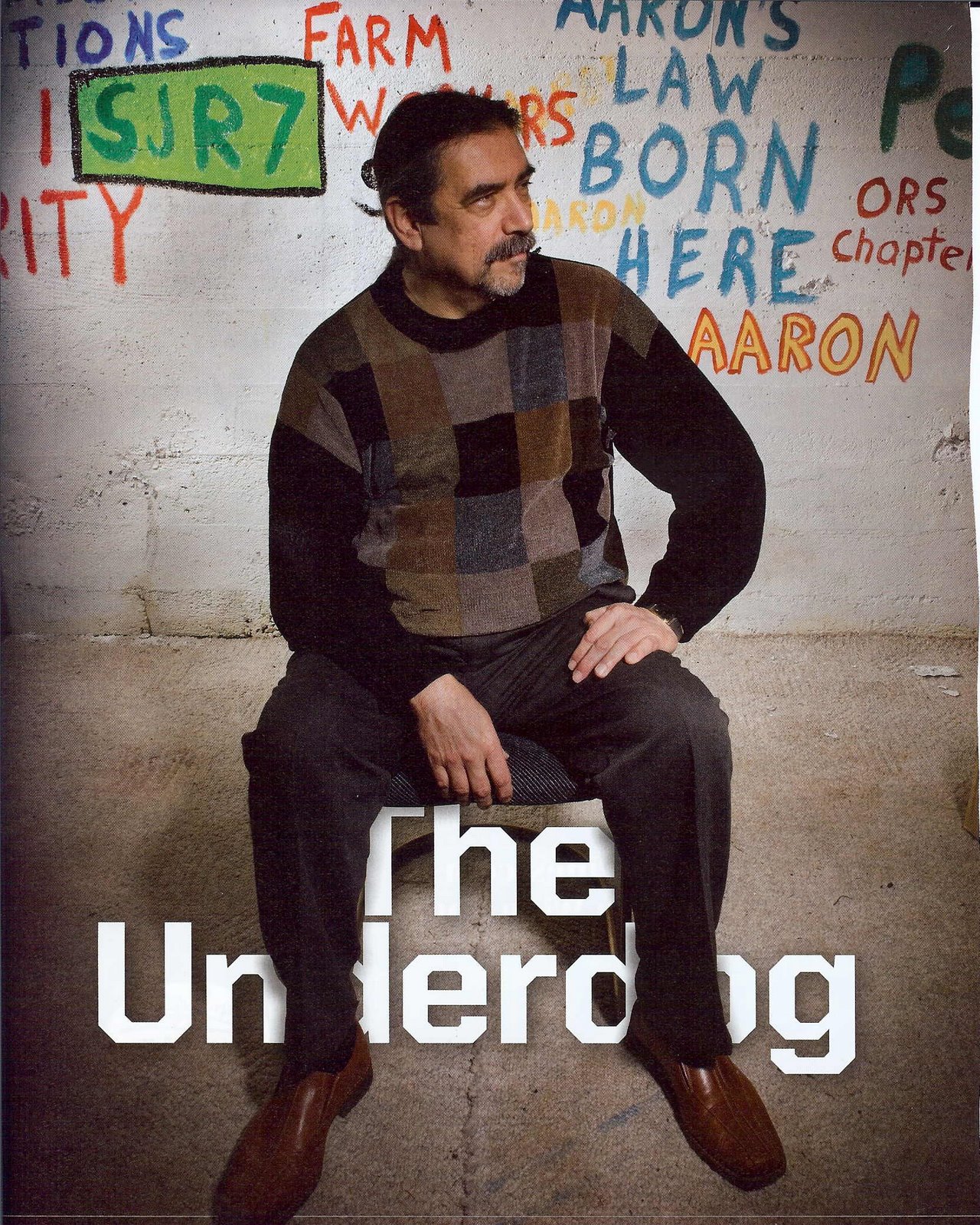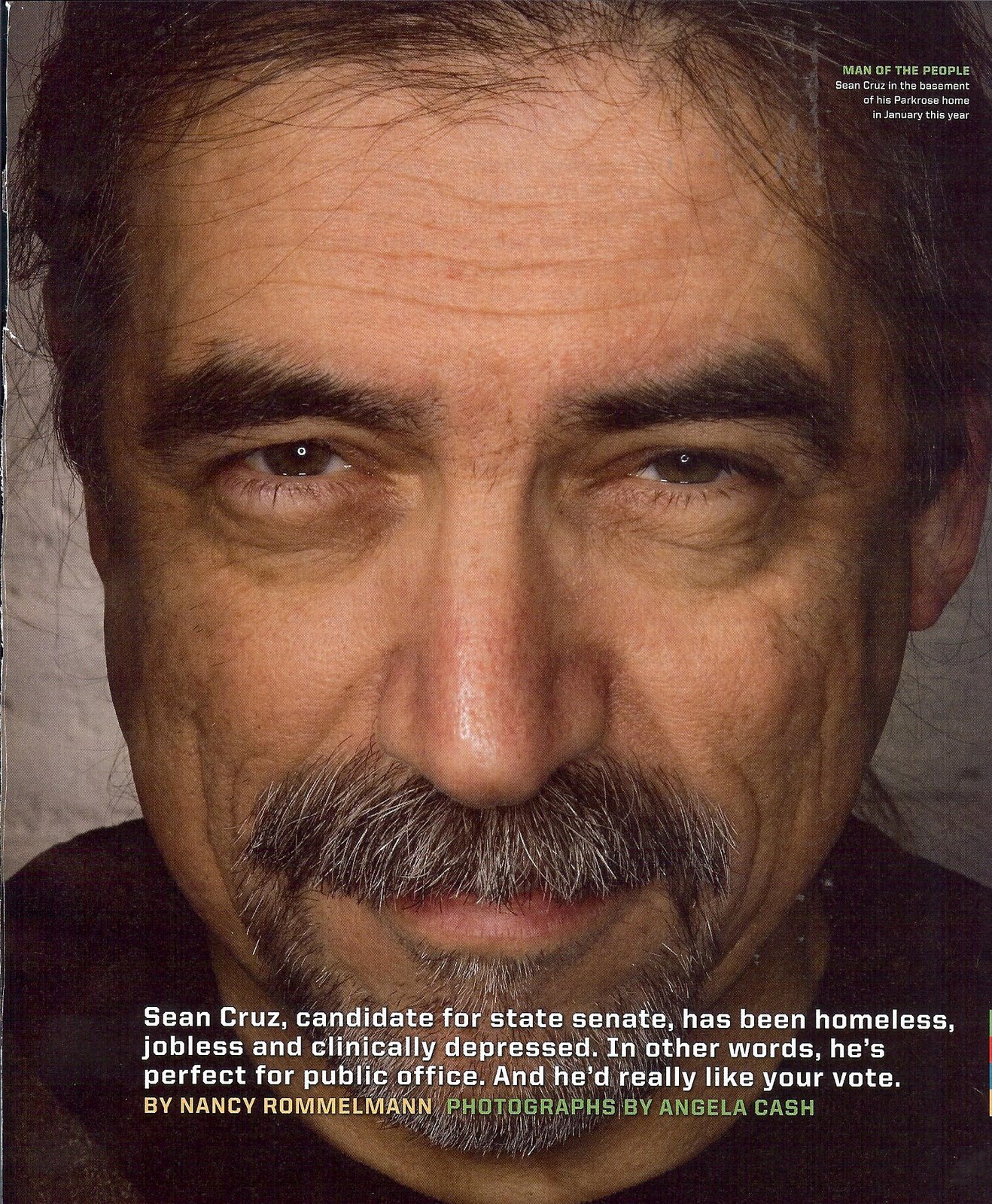By Sean
Aaron Cruz
Portland,
Oregon—
The
movie 12 Years a Slave shocked me a
bunch, but not for the reasons one might expect.
What
shocked me the most was not the bloody, detailed depiction of the barbarism and
cruelty of America’s Slave Era, because those facts are all well known, but in
the more subtle reaches: the forced separation of families, the scenes of Scripture-quoting
monsters in everyday life justifying their crimes against humanity, and in the other
parallels and contrasts I could see between Solomon Northrup’s experiences and
my own as the father of four kidnapped children whose abduction began some 18
years ago and continues beyond today, and in the attitudes we both encountered
along the way.
For
me personally, Solomon Northrup’s story was more about the present than it was
about the past, more about the pain of indifference than about the pain of the
lash.
I
went into the theater thinking about the horrors of slavery, but early on the movie
put me on a different course of thought: knowing first the suffering that lay
ahead for the Northrup family, the father losing his wife and children, and the
children suffering the sudden, mysterious loss of their father, and then during
the slave market scene, in the attitudes the slave Patsy encountered when she was
sold separately from her two children, never to see them again.
My
children and I were abruptly parted on February 12, 1996, when they disappeared
from Oregon in a kidnapping/shunning organized by Mormon church members in
Oregon, Washington and Utah, an abduction also intended to last forever.
My
mom never saw her grandchildren again, died four years into the kidnapping, an
extension of the shunning, how they disappeared from Grandma’s life, Mormons in
control, the indifference I encountered….
Three
different forms of abduction between us, I was thinking, sharing much in
common: Each was organized. There was planning and logistics and a larger social
structure that supported the crimes. Beyond their reckless disregard for life
and liberty, there was the kidnappers’ desire to do actual harm to a person
they did not personally know. The kidnappers’ actions resulted from their
respective religion- or race-based hatreds, and with which they intruded into
their victims’ lives.
My
first thought was that I would rather have been kidnapped into slavery than for
my children to be the kidnappees, that I would be beaten and chained in a box
if it meant my children would remain safe in their home, and that at least
Solomon Northrup knew that no one was tricking and tormenting his children
during the captivity, deliberately destroying every emotional as well as
physical link between them and forcing his children into complicity in the
kidnapping. And none of his children died during the course of his ordeal. It
could be worse, I thought, than this. I would take those beatings, and 12 years
of separation is much better than 18.
In
the slave market scene, a slave trader told Patsey in not so many words that
she would forget about these children sooner or later, so she ought to move on
and focus on her new life with the new master, and I found myself saying out
loud to no one in particular, “That’s what they expected me to do, too.”
I
was referring to the attitudes I have encountered. People have been telling me
this ever since the beginning of the abduction, that I ought to “move on” or “accept
this”, in one way or another, and my children’s kidnappers were all of this
mind also, believing that they could get away with their crimes if I did move
on, and for so long as they could continue to maintain control over my children’s
lives, which they do even as adults.
The
larger society was indifferent to all of these abductions as they were taking
place. Years went by before Solomon found a person willing to get out of his
comfort level and take an action that would lead to resolution and
reunification, if not justice. It was not wishing or hoping or praying or
pissing up a rope that brought the Northrup kidnapping to an end, but a person
taking action.
In
all of the 18 years of the Cruz kidnapping, I only encountered one such person,
a retired police officer named John Bissell, who saw the situation for what it
was and did everything he could to help.
But
I don’t believe that anyone in the movie’s audiences would expect Solomon to
ever do this, to move on or accept these injustices, a contrast between our
experiences that arises from people’s attitudes entirely, although we do know
that Solomon was in fact reunited with his children. No one knows, however, if
the Cruz abduction/shunning will ever come to an end, if the Mormons will ever
release my children to have contact with their father again, he who dared to
criticize LDS doctrine in his own home….
Scripture-thumpers
dominate both of our stories. Sunday worshippers committed the crimes against
the Northrup and Cruz families, pious slavers and prayerful shunners, each reading
from their Good Books the lines that made fit their crimes. Woe be to those who
disagree with The Teachings that justify our respective Peculiar Institutions;
punishments of Biblical proportions resulting, they intone in their Psalm-singing
and Tabernacle Choirs….
18
years of painful separation, so far, 18 years a kidnapping, and a whole church
to keep it that way….
------------------
Coming soon:
12 Years a Slave – 18 Years a Kidnapping,
pt 2.







No comments:
Post a Comment